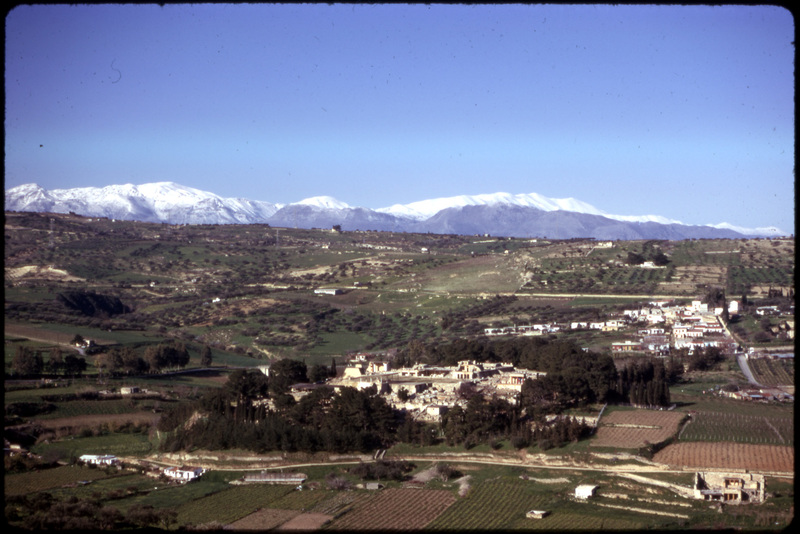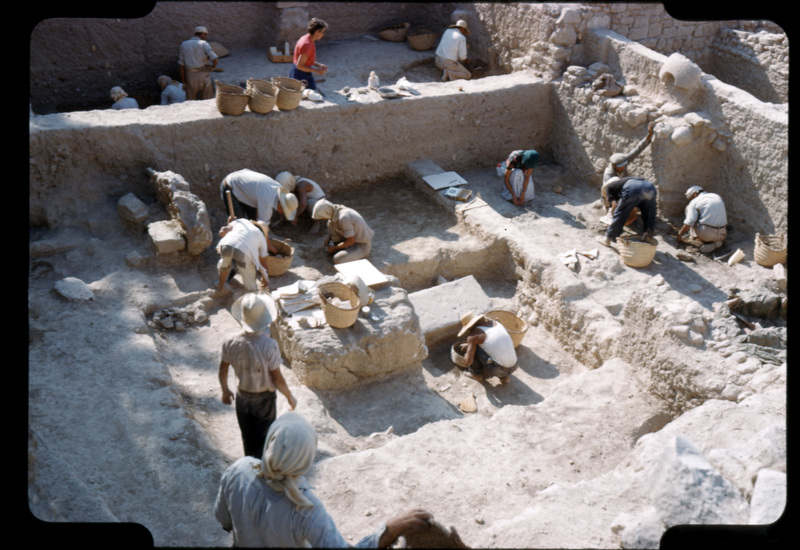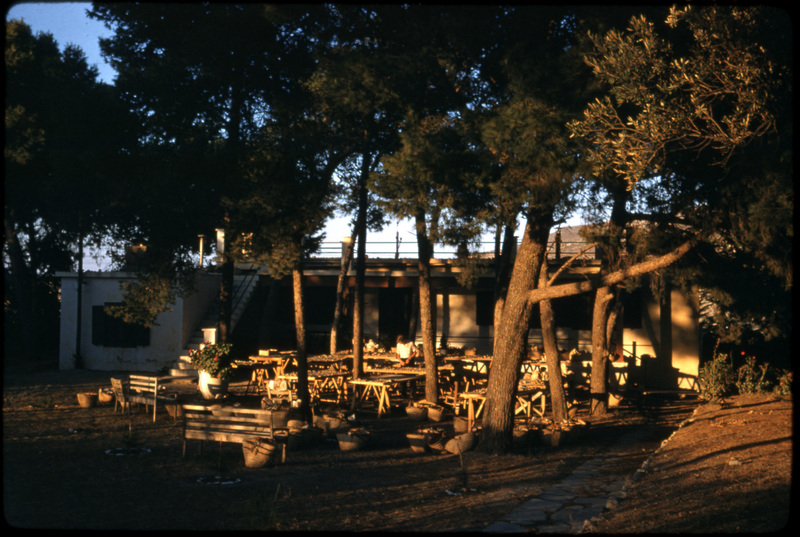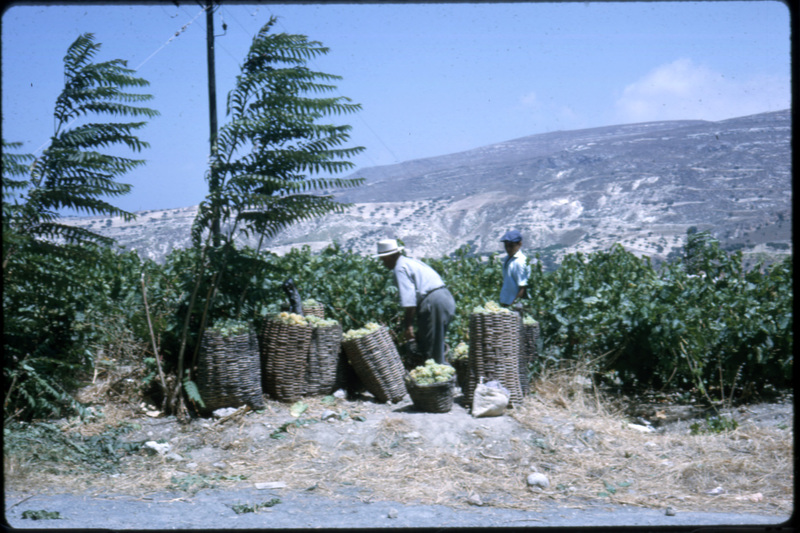
What is one to do when the cities of the past intersect with those of the present?
This is a question that has been contested for decades by eager archeologists on the island of Crete, pictured in the image above. As the largest island in Greece, located in the Eastern Mediterranean, Crete has long been a place where rich civilizations prosper. It is here in the Kairartos River Valley where the ancient city of Knossos--the largest Bronze Age archeological site--rests. The city itself is just under 5 kilometers from North to South and 3 kilometers from East to West; no other archeological site has been more explored than Knossos. Once embedded layers below the sprawl of the modern port city Heraklion, Knossos has a long history of excavation. The site has been under excavation from its discovery in 1878 to contemporary times, led by a host of archeologists including the renowned Hugh Sackett in the late 60s.
In the continued excavation at Knossos, Hugh Sackett’s snapshots take stock of not only the work at the Minoan site but also the modern port city that surrounds it. Sackett’s interest in not only documenting the excavation at Knossos but the vibrant life of Heraklion is a lens with which a conversation about progress and excavation can be derived. How do we search for vital information about ancient Greece through archeology without destroying the developments of modernity, and where, if any, is the intersection between these classical and contemporary civilizations? The answer lies not in the differences between modern and ancient civilizations but rather the cultural heritage buried in the land. Through Hugh Sackett’s slides and additional imagery, the cultural past of Knossos and its relation to the present Heraklion comes into clearer focus.

The palace of Knossos, the ceremonial and political center of civilization in the Minoan world, was the largest settlement on the Island of Crete in the Bronze Age. Built around a rectangular courtyard, the other notable rooms of the structure included to the West a throne room, shrine and a staircase and to the East residential structures. The walls themselves are made of ashlar stone, rougher stone, timber, rubble, and plaster, and distinctly Minoan columns made out of wood that were integrated into the structure. Inside the palace, the walls and passageways were covered in vibrant frescoes, the plaster made out of burnt limestone. Here, the image looks outward from the grand South Propylaeum (built with the aforementioned techniques) onto rolling terrain of rural civilization and lush greenery. Knossos is nestled within working farmland, as the modern exploits of Cretans juxtapose with the ancient ruins of the past.

Documenting the work on the Royal Road at Knossos, Sackett catches a moment where 15 excavators are immersed in their work. The Royal Road once extended from the port to the Palace, emphasizing the outstretch of Minoan civilization. Many areas of the city haven't been excavated. However, the development of mechanized agriculture and a growth of construction in the suburbs of Heraklion, has made it so that many more discoveries have been accidentally made. This has caused the Greek archeological authorities and the British School at Athens to be increasingly diligent about keeping up with the "rescue work involved (Hood, Smyth, 1) " preserving these sites in the wake of modernity.

The recent work of Researchers from the University of Cincinnati and the Knossos Urban Landscape project coorberates the claim that Knossos is much larger than archeologists originally realized. This was identified by the antiquities that were collected from homes and cemeteries well outside the bounds of what scholars believed to be the original outskirts of Knossos. In fact it is estimated to be three times the size of original estimations. With this research in mind, will many more patches of land surrounding Knossos become archeological sites?
Here, a man sorts the findings from the excavations at Knossos at a closeby taverna. At this makeshift headquarters “sorting tables” have been set up to sort the artifacts for further study. Removed from the archeological site itself, this image is integrating pieces of modernity and the ancient Minoan past. The bond between the past and the present are “inseparable and mutually constitutive,” as our present is shaped by the consciousness of the past.


Here, two local men are depicted picking fruits on the side of a path with the landscape of Crete rising up behind them. This photograph was also taken at a taverna near Knossos, and is at its core a scene of daily life and labor for those on the Island of Crete. One might ask what is the relationship between locals and archeologists that have traveled to their home to excavate. Michael Shanks maintains that one of the main cultural successes of archeology is that it provides people a sense of identity with “histories and origin stories rooted in the material remains of the past."
When archeology and modernity reach a crossroads, the question is often posed which one is prioritized?
Through the relationship between ancient Knossos and the thriving current city of Heraklion (documented in Sackett's slides), one can begin to recognize that the past and present are not at odds with each other, but rather working in tandem to establish a deeper cultural history in the land itself.
Katy Nau '22